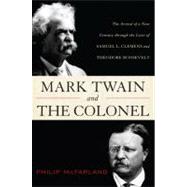Mark Twain and the Colonel Samuel L. Clemens, Theodore Roosevelt, and the Arrival of a New Century

Mark Twain and the Colonel Samuel L. Clemens, Theodore Roosevelt, and the Arrival of a New Century
- ISBN 13:
9781442212268
- ISBN 10:
1442212268
- Format: Hardcover
- Copyright: 07/16/2012
- Publisher: Rowman & Littlefield Publishers
Rent
Sorry, this item is currently unavailable on Knetbooks.com
Note: Supplemental materials are not guaranteed with Rental or Used book purchases.
Extend or Purchase Your Rental at Any Time
Need to keep your rental past your due date? At any time before your due date you can extend or purchase your rental through your account.
Summary
Mark Twain and the Colonel tells the story of two dominant figures in American culture and politics at the turn of the twentieth century. Mark Twain and Theodore Roosevelt were often in New York City during this time period and their paths crossed often. In their many appearances before the public, neither was heard to speak ill of the other. But in private they unburdened their minds more candidly, Roosevelt on one occasion volunteering that he would like to skin Mark Twain alive, and Twain saying that he thought Roosevelt to be "far and away the worst President we have ever had." Philip McFarland tells the story of the rich years of American history between 1890 and 1910 through the fully engaged involvement of two of its most vital participants. The story begins in 1900, with a welcome on the New York piers extended to one of the nation's best loved figures as he returns from nearly a decade of self-imposed exile. The narrative then unfolds in six sections, each focusing on a different aspect of the United States of the early twentieth century that continues to matter to this day: America as an imperialist nation, America as a continental nation, America as a racial nation, America as a corporate nation, America at home, and America striving for peace. The story nears its end ten years later, in 1910, with that same figure returning once more to Manhattan, beshawled, seated on a deckchair, derby on his head, carried down the gangway while reporters wait on the pier yet again to welcome him home a final time. In this short span of years, the America of the late nineteenth century will move substantially closer to the America we know today, thanks in part to the influence and actions of Mark Twain and Theodore Roosevelt, two of the most influential figures of the age.








